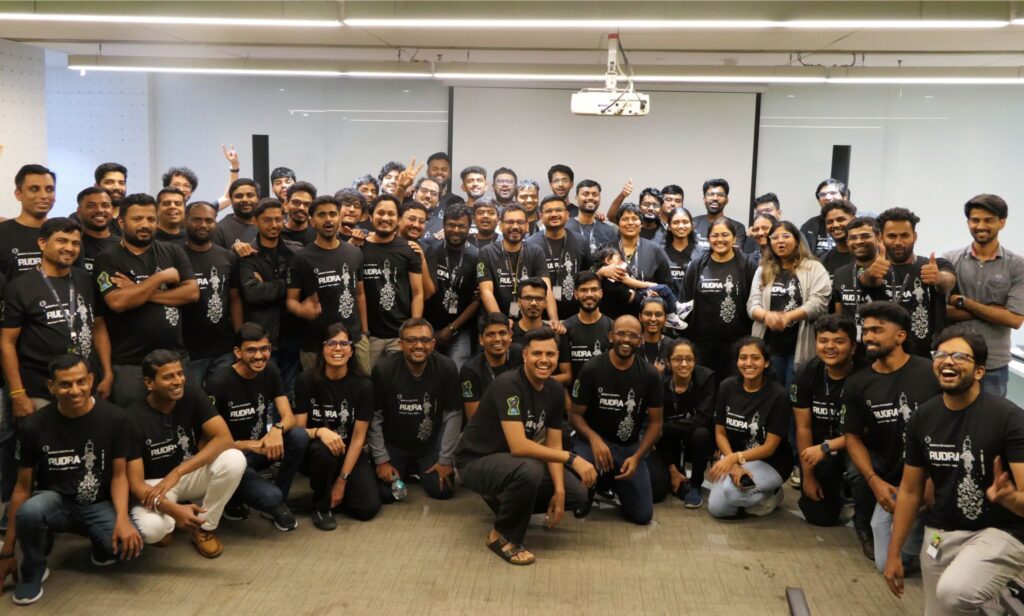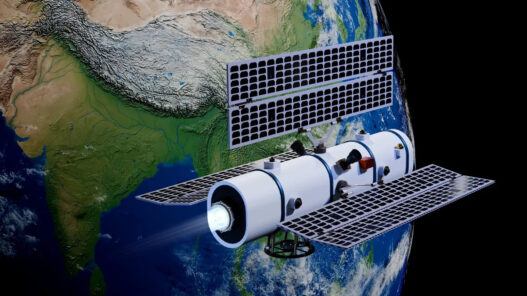Picture this: a startup born in 2015, fuelled by a letter from former President Kalam, now firing rockets in orbit while keeping things non-toxic. Bellatrix Aerospace, headquartered in Bengaluru, has launched Rudra, its green mono-propellant system built to replace hydrazine—a nasty, toxic chemical all other space agencies still use. In early 2025, they logged their third consecutive successful firing in orbit aboard ISRO’s PSLV‑C60 – a milestone in sustainable space propulsion.
This isn’t a half-hearted effort. Rudra is a full system: custom catalyst, 3D‑printed tanks, valves—all designed and built in India. What this really means is cleaner launches, safer handling on the ground, and a major drop in toxic emissions.
But the story doesn’t end there. Bellatrix’s Arka electric thrusters – tiny hall-effect engines – also fired flawlessly in orbit in 2024, including a world-first heaterless hollow cathode. Together, Rudra and Arka expand India’s propulsion toolkit in space.
“We’re showing the world that clean space tech is possible and scalable,” Bellatrix told The Hindu after their successful mission in January 2025.

Why it matters: India steps up globally
Green propulsion isn’t just hype—it’s a gateway. ISRO has signalled interest in going green for crewed missions like Gaganyaan. And now, startups are leading the charge: Bellatrix is building its own Pushpak orbital transfer vehicle to carry satellites into low-Earth orbit by 2026.
The tech world’s taking notice: in March 2025, Japan’s Astroscale announced a collaboration with Bellatrix (and Digantara) to offer on‑orbit servicing in India within 1–2 years. Bellatrix also opened a U.S. subsidiary earlier this year, signaling long-term global ambition.
Other players in India’s green-propulsion race
Manastu Space – Mumbai
Manastu has developed a hydrogen‑peroxide‑based green propulsion system. It will be flight‑tested on Dhruva Space’s LEAP‑3 satellite bus later this year. Their fuel claims 60% lower emissions and 50% efficiency gains.
“We see this as the future of in-space mobility—not just for India but for the global commercial market.”
Manastu’s team told ThePrint, at the Bengaluru Space Expo,
Skyroot Aerospace – Hyderabad
Skyroot has jumped into clean rocket fuel with Dhawan‑1, India’s first small cryogenic engine using LNG/LOX. It’s entirely 3D-printed and designed for their Vikram launch vehicles. While their first few launches used traditional fuels, future versions may tilt further into green tech.
Ethereal Exploration Guild (Ethereal X) – Bengaluru
Ethereal X is building Pegasus, a semi‑cryogenic LOX/RP‑1 engine using regenerative cooling and a full‑flow staged combustion cycle—the first of its kind in India. Their goal: reusability and cost reduction in small-lift launch systems.
“We don’t just want to reduce emissions, we want to reduce waste. Full reusability is the benchmark,” said co-founder Harsha Ramesh to EBNW.
Nabhdrishti Aerospace – Bengaluru
A new entrant working on hybrid propulsion for UAVs and urban air mobility, Nabhdrishti just raised $3 million in seed funding. While not a space startup per se, their work on cleaner turbines and electric-gas hybrid systems shows how propulsion innovation is rippling across sectors.
The bigger picture
Here’s the thing: green propulsion is no longer a fringe idea—it’s mainstream. Bellatrix’s success gives India a seat at the global table, while ISRO’s own clean-tech pushes suggest future missions might all go eco-friendly. The Japanese tie-ups and startup momentum reflect a deeper shift—India is looking to establish itself not just as a satellite launch hub, but a global leader in sustainable space infrastructure.
What to watch next
- Pushpak OTV launch: If Bellatrix delivers in early 2026, it becomes the first privately-built, green orbital transfer system from India.
- Manastu’s in-orbit test: This mission will be critical to validating hydrogen peroxide propulsion in live commercial settings.
- Policy & funding movements: If ISRO or IN-SPACe provides further backing, this could trigger a new wave of space-propulsion R&D from Indian startups.
Final Thought
Bellatrix Aerospace isn’t just firing thrusters—they’re firing up India’s green space revolution. And they’re not alone. Between electric, cryogenic, hybrid, and reusable systems, Indian space startups are aiming straight for the frontier—and doing it without poisoning the planet.
The world is starting to take notice. And they should.



















